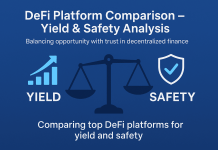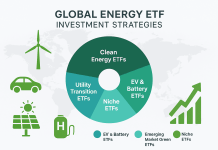Are you thinking about diving into the stock market? Great choice! Investing is one of the smartest moves you can make for your financial future. Sure, with all the jargon and market fluctuations, it might seem a bit daunting at first, but once you get the basics down, you’ll feel much more confident. In this article, HTC News will take you on a financial trip about “investing 101.”

Let’s break it down step-by-step so you can start your investment journey.
How to Kickstart Your Investment Journey
First, in investing 101, investing is about aligning your financial goals with suitable investments. Understanding your risk tolerance and managing it as you go along is crucial.
Once you’ve got a firm grasp on your goals, it’s your time to take the plunge. Whether you opt to navigate the investment landscape solo or seek the guidance of a financial planner, the key steps outlined below will not only guide you but also empower you to steer your own course, instilling a sense of confidence and control in your investment journey.
Setting Your Investment Goals – Investment 101
Secondly, in investing 101, before you open an account, you need to determine your goals. Are you investing for retirement, saving for a house, or looking for a steady income stream? Your goals will help reduce your options and make the process smoother.
Ask yourself, “What do I want to achieve with this money?” Your answer will dictate how much risk you can afford and which accounts to prioritize. For instance, retirement goals might lead to tax-advantaged accounts like IRAs or 401(k)s. Remember, these accounts have specific rules about when you can access your money.
And remember your emergency fund. There might be better ideas than investing it since you need quick access to that money, especially during market downturns.
Choosing the Right Investment Vehicles – Investment 101
Thirdly, in investing 101, after defining your goals, it’s time to choose the correct investment accounts or vehicles. Multiple accounts can work together to meet a single objective, so consider all your options.
If you enjoy hands-on management and flexibility, a brokerage account could be your ideal choice. These accounts authorize you to easily trade stocks, mutual funds, and ETFs. However, it’s important to note that they lack the tax advantages of retirement accounts.
You have many choices regarding brokerage firms like Charles Schwab, Fidelity, Vanguard, and TD Ameritrade. They offer a variety of accounts, including IRAs and custodial accounts for minors, and provide customer support.
Alternatively, robo-advisors might be your best bet if you prefer lower fees and automated rebalancing. However, they might not suit more complex financial goals.
Remember, simply opening a brokerage account isn’t enough. You need to make the actual investments within that account to get started.
Deciding How Much to Invest – Investing 101
Now that you’ve chosen your accounts, think about how much money you want to invest in each one. This amount will depend on your goals and time horizon—the time you have until you reach your goal.
A good rule of thumb for retirement is to invest about 15% of your income annually. Start small if that seems too high, especially if you’re living paycheck to paycheck. Even 1% is a good beginning. The key is to start now, so your money can grow over time.
When investing your money, you might wonder if it’s better to invest all at once or spread it out over time—a strategy known as dollar-cost averaging (DCA). Both have their pros and cons. DCA helps you invest consistently and can mitigate risk. Still, lump-sum investing could potentially yield higher returns if the market trends upward over time.
Regardless of your choice, consistency is crucial. Keep adding to your investments regularly to maximize growth opportunities.
Measuring Your Risk Tolerance – Investing 101
Risk tolerance is a significant factor in choosing the right assets for your portfolio. It’s about how much risk you’re willing to take in exchange for higher returns.
To gauge your risk tolerance, consider taking a risk tolerance questionnaire. This tool will help you understand your comfort level with volatility. Generally, more conservative investors might lean towards bonds and cash, while those with an excessive risk tolerance might prefer stocks.
It’s also essential to distinguish between risk tolerance and risk capacity. Risk capacity speaks about how much risk you can take based on your financial situation, such as your job status and other financial responsibilities. Balancing these two factors is crucial for a well-rounded investment strategy.
Start Investing Now!
Starting your investment journey doesn’t have to be overwhelming. By setting clear goals, choosing suitable investment vehicles, and understanding your risk tolerance, you’re on your way to building a robust portfolio. Remember, the most vital step is to start. Over time, with patience and consistency, you’ll see your investments grow and move you closer to financial independence.
FAQs About Investing in the Stock Market
1. How much money do I need to start investing?
You don’t need a lot of money to start investing. Many brokerage accounts allow you to begin with as little as $100; some even offer fractional shares, letting you invest smaller amounts in big-name stocks.
2. What’s the difference between stocks, bonds, and ETFs?
Stocks represent ownership in a company. Their value can go up or down based on the company’s performance.
Bonds are loans you give to a company or government that pay back with interest over time. They are generally less risky than stocks.
ETFs (Exchange Traded Funds) are clusters of stocks or bonds that exchange on the stock market. They offer diversification and typically have fewer fees than mutual funds.
3. How do I know which investments are suitable for me?
Your investment options should align with your financial goals, risk tolerance, and time horizon. A good starting point is diversifying your investments through various asset classes to balance risk and reward.
4. How often should I check my investments?
Reviewing your portfolio at least once or twice a year is a good practice to make sure it is in range with your goals and risk tolerance. Avoid checking too frequently to prevent impulsive decisions based on short-term market fluctuations.
5. What is dollar-cost averaging, and should I use it?
Dollar-cost averaging is an investment tactic where you always invest a fixed amount of money at regular intervals, regardless of market conditions. This approach can minimize the impact of volatility and help build wealth over time. It’s beneficial for new investors looking to mitigate risk.
read more: Why is it Illegal to Have a Pet Raven?
























